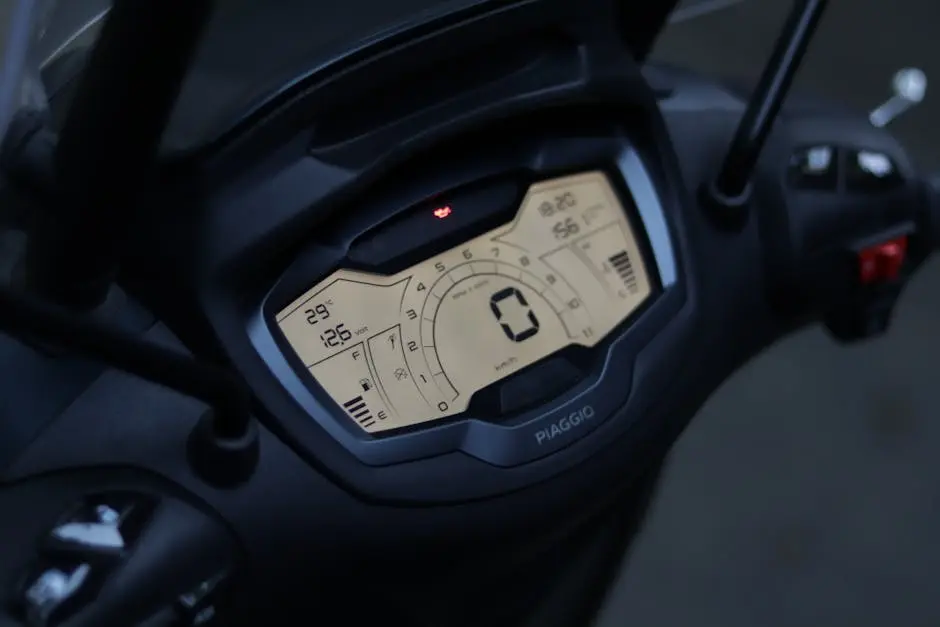Keeping your 3 wheel electric scooter in top-notch condition not only ensures a smooth ride but also extends its lifespan. Regular maintenance can prevent common issues and help you get the most out of your investment. Whether you’re a new scooter owner or a seasoned rider, these practical tips will guide you through simple steps to maintain your scooter’s health.
1. Check Your Tires Regularly
Proper tire maintenance is crucial for a safe and efficient ride. Ensure that they are inflated to the recommended pressure and check for any wear or punctures that could affect performance. It’s not just about comfort; underinflated tires can significantly reduce your scooter’s efficiency, causing it to consume more power than necessary. Similarly, overinflated tires increase the risk of a blowout, which can lead to dangerous situations. If you’re unsure about the correct tire pressure, refer to the scooter’s manual or consult a professional. This routine check can be the difference between a smooth ride and a potential hazard.
2. Keep an Eye on the Battery
The health of your scooter’s battery is vital for its longevity. Charge it properly and avoid letting it go completely flat. Regularly check the connections and clean any corrosion to maintain efficiency. It’s also wise to charge your battery in a temperature-controlled environment, as extreme temperatures can impact its performance. If you need more information on preserving battery life, you might find it helpful to delve into resources about battery maintenance tips to extend its life.
3. Inspect the Brakes
Brakes are a critical component for your safety. Regularly test them to ensure they are responsive, and replace brake pads if they show signs of wear. Faulty brakes can turn your commute from an enjoyable ride to a precarious adventure. Develop a habit of listening for sounds like squealing or grinding, which may indicate worn-down brake pads. Familiarizing yourself with the braking mechanism, whether it’s disc or drum, allows for easier troubleshooting. Understanding brake systems is essential to maintain safety standards.
4. Tighten Loose Bolts and Screws
Frequent use can cause bolts and screws to become loose. Check them periodically, and tighten any that need adjustment to prevent unnecessary wear and tear. It’s easy to overlook these small components, but they hold essential parts of your scooter together, ensuring stability and safety. Keep a toolkit handy and get into the habit of inspecting your scooter before each ride. For more technical assistance, consider a check-up schedule that considers the frequency of your scooter usage.
5. Clean Your Scooter Thoroughly
A clean scooter not only looks good but also functions better. Regularly wipe down the frame and remove any debris that could affect its components. Dirt and grime can accumulate in crevices and potentially damage electrical parts if not promptly cleaned. Use a wet cloth for the frame and a soft brush for tires and brakes. If you’re tackling tougher grime, a mild soap solution can do wonders without risking damage to delicate parts. Remember, keeping your scooter spotless minimizes long-term wear and improves overall efficiency.
6. Protect Your Scooter from Extreme Weather
Harsh weather conditions can damage your scooter. Store it in a dry, covered place when not in use, and avoid riding in heavy rain or extreme temperatures. Rain can seep into the small electronic openings, leading to short circuits or rust in metal components. If you live in an area with inclement weather, invest in a scooter rain cover and drying materials. Similarly, extreme cold may affect battery life and functionality, while extreme heat can lead to overheating issues. Weatherproofing is more than just convenience—it’s about extending the life of your vehicle.
7. Lubricate the Moving Parts
Regular lubrication of moving parts such as the chain and bearings reduces friction and prevents rust, ensuring a smoother ride. Choosing the right type of lubricant is just as important as the application itself. Silicone-based lubricants are preferable over oil-based ones, as they are less likely to attract dust and debris. Be cautious to apply lubrication specifically to the moving parts only, avoiding electrical or braking systems. Lubricating the right way will ensure long-term comfort without risking safety.
8. Check the Lights and Signals
Visibility is key to safety while riding. Make sure all lights and signals are functioning properly, and replace any bulbs that have burned out. Lights not only illuminate the path ahead but also alert other road users to your intentions to change directions or stop. Take proactive measures by carrying spare batteries or bulbs for convenience. Routine checks can easily be integrated into your pre-ride inspection to ensure that your visibility is uncompromised. Consider familiarizing yourself with lighting standards for scooters for added safety.
9. Stay Updated with Regular Servicing
A professional tune-up can highlight potential issues before they become serious problems. Schedule regular servicing to keep your scooter running smoothly. Trusted mechanics provide invaluable insights through routine diagnostics to detect issues unnoticed by an everyday user. If under warranty, ensure that the maintenance is carried out by an authorized service center to avoid voiding it. A healthy service regime eventually translates into a safer, more reliable scooter experience. If you’d like to learn more about what happens during routine checks, check out the benefits of regular servicing.


















